Early this morning, the National Federation of Independent Business released its monthly Small Business Optimism Index. As shown below, that headline reading continues to recover from the more than decade low, set back in March. With a move up to 91.5 in June, the index has now risen in each of the past three months and is at the highest level of 2024.
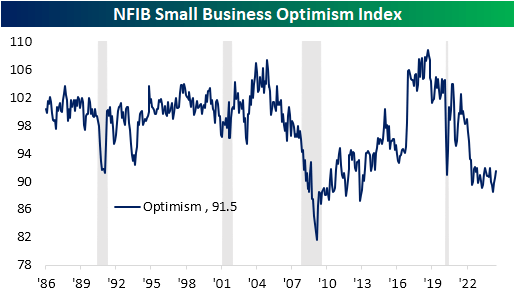
In the table below, we show each category of the report, as well as the month-over-month change and how those readings rank as a percentile of all periods. As shown, even with recent improvements, the headline number still sits in the bottom 13% of its historical range. Most other categories are similarly depressed. Breadth in June leaned positive, with only one category falling: job openings hard to fill. Although that one category remains one of the more historically elevated in the report, across all labor market readings there has been a trend towards weakness.

As mentioned before, breadth in this month’s report was generally positive with one input to the composite falling, five going unchanged, and four rising month-over-month. Of those gainers, one of the biggest was outlooks for expectations for the economy to improve. As shown below, that index remains deeply negative (meaning on net there are more respondents expecting the economy to worsen than improve) and to a larger extent than has been observed throughout most of the survey’s history. That said, at -25 it has reached the highest level since July 2021.
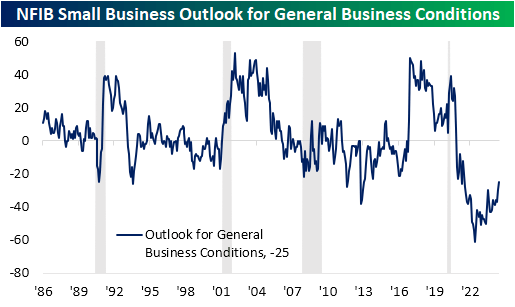
The survey also questions firms on whether they view now as a good time to expand. Over the past four months, this reading has consistently come in at a lowly 4%. As shown in the second chart below, firms point toward economic conditions as the primary reason for that negative expansion outlook. Political climate is another common reason at 12% of negative responses, followed by financials and interest rates at 7%.
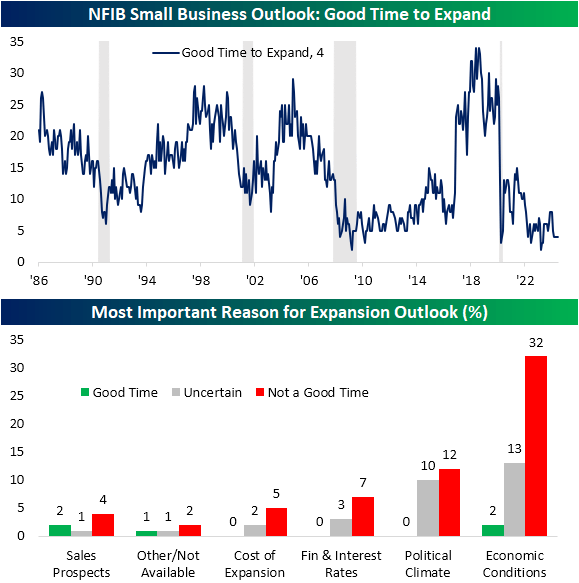
Given interest rates rank highly in firm’s negative expansion outlook, below we show various expenditure related series. Capex plans are just shy of falling into the bottom quartile of their historical range. Actual capital expenditures are even weaker. That index fell down to the lowest level since the summer of 2022 in June. As for inventories, there are on net 2% more firms that evaluate current levels as too large than too low and as a result, there is also a net 2% of firms that report they plan to decrease inventories in the next three to six months.
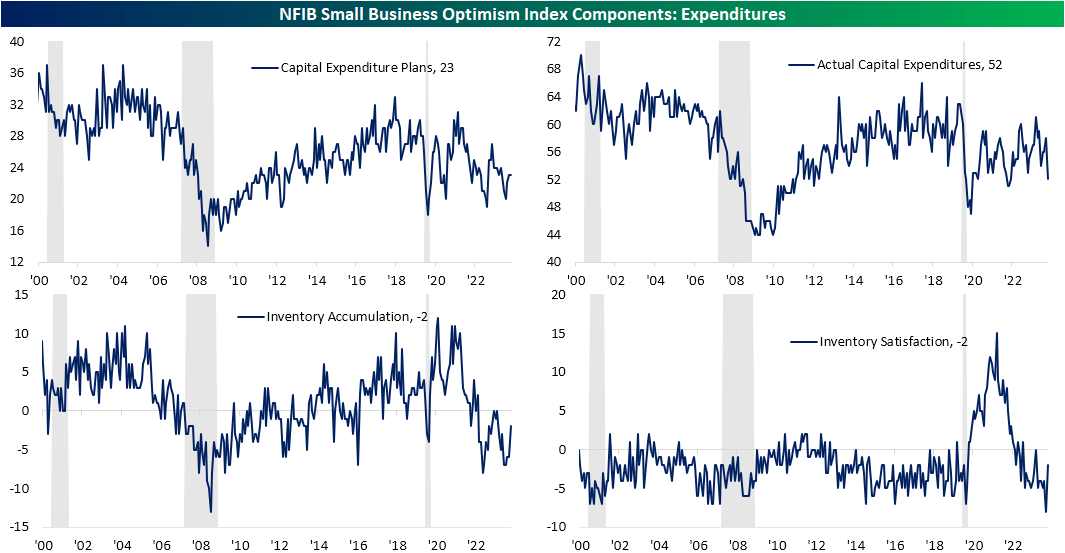
Finally, we would note that firms are reporting cutbacks on all types of capital expenditures. Equipment remains the most commonly reported capex, but at 35%, that is tied with the February reading for the lowest since the end of 2020.
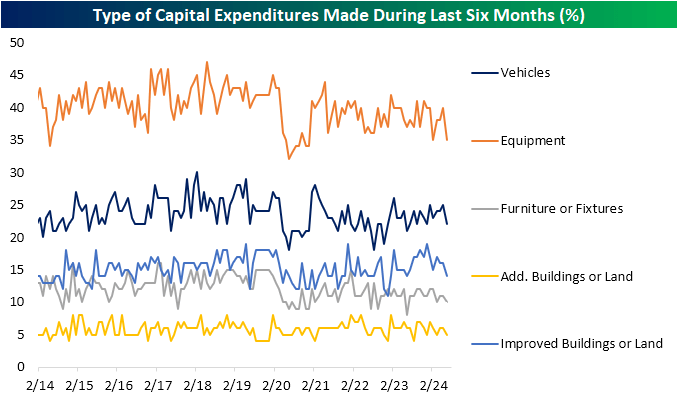
Original Post
Editor’s Note: The summary bullets for this article were chosen by Seeking Alpha editors.
Read the full article here



